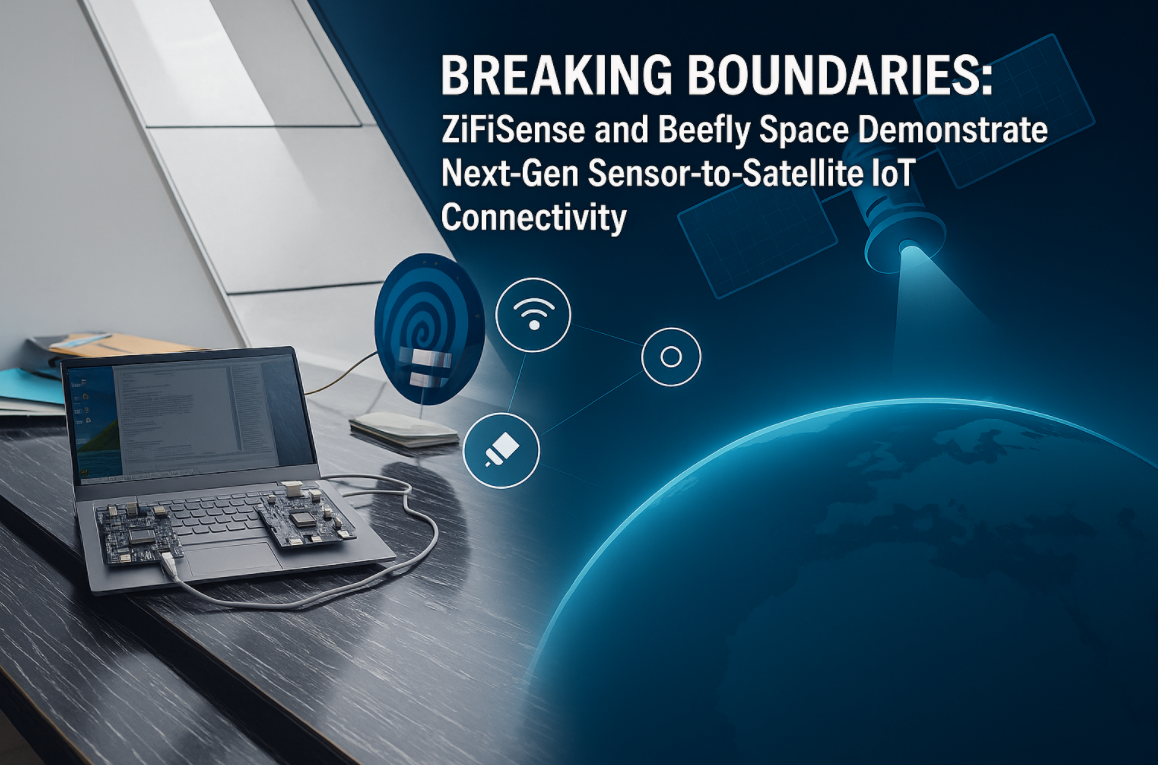As IoT applications demand longer range, lower power, and higher reliability, ZiFiSense has successfully completed a challenging field test of its next-generation ZT1826 wireless chip in partnership with Beefly Space and Shanghai Jiao Tong University (SJTU). The test demonstrated that its advanced M-FSK technology is capable of connecting a low-power sensor to a satellite in orbit at 1,100 km.

Test Background: Aiming Beyond Conventional Limits
Unlike ordinary distance tests, this experiment was designed to replicate signal loss levels close to those in real satellite links — reaching received signal powers between -133 dBm and -136 dBm, nearly matching LEO satellite conditions (–136.52 dBm reference).
The tests were conducted across mountainous terrain in East China. Using Tongguan Mountain in Yixing (530 m) as the fixed receiving station, signals were transmitted from Dayang Mountain in Suzhou (338 m) and the Suzhou IFS Tower (>420 m) at 900 MHz frequency and 20 dBm transmit power.
Results: Stable Communication at 68.6 km, Link Maintained at 92.5 km
Across multiple trials, the ZT1826 + APTG-SDR10 setup delivered outstanding results:
-
At 68.6 km, the link remained fully stable with no packet loss, even at a received signal strength of –122 dBm.
-
At 92.5 km, despite significant signal attenuation and environmental interference, the system maintained a stable link with <5% packet loss, occasionally achieving full data recovery.
These results confirm that the ZETA system’s ground-to-space communication capability already meets — and in some cases exceeds — the technical demands for satellite IoT deployment.
Inside the Technology: Industrial-Grade, Programmable, and Powerful
The success of this test lies in the ZT1826 chip’s unique combination of industrial-grade performance, wide rate range, and software-defined flexibility.
Key technical highlights include:
-
Advanced M-FSK® for improved link robustness over long distances.
-
HARQ intelligent retransmission, boosting sensitivity by up to 6 dB and ensuring reliable data under harsh conditions.
-
Advanced PSK (BPSK, QPSK, 8PSK) modulation, supporting up to 300 kbps within a 100 kHz bandwidth.
-
SDR-based voice transmission, enabling high-quality audio for intercom and wireless microphone applications.
Global Implications: ZETA Technology Sets New Benchmark for Long-Range IoT Connectivity
The test team also conducted an initial comparison with the industry benchmark, Semtech’s LR-FHSS technology. In the same 92.5 km test scenario, the ZETA solution demonstrated strong competitiveness in terms of both technological maturity and cost-effectiveness.
The success of the 92.5 km test is a rare achievement in the global landscape of similar technology trials. The team expressed optimism about the results: "We are impressed with the performance of ZiFiSense, and we believe there is still room for improvement," with plans to extend the testing internationally for further validation.
This long-range performance test has powerfully demonstrated that the ZETA communication system, based on the ZT1826 chip and APTG-SDR10 gateway, is already equipped to handle extreme communication scenarios. The system's nearly zero packet loss performance at 68 km and successful link maintenance at the 92 km limit not only meet the rigorous requirements for satellite IoT ground validation but also show tremendous potential for applications across smart cities, wide-area logistics tracking, environmental monitoring, industrial automation, and voice communication — all of which require long-range coverage.
This test marks a significant leap forward in the quest for reliable, long-range communication systems, positioning ZETA as a key enabler in the future of global IoT connectivity.